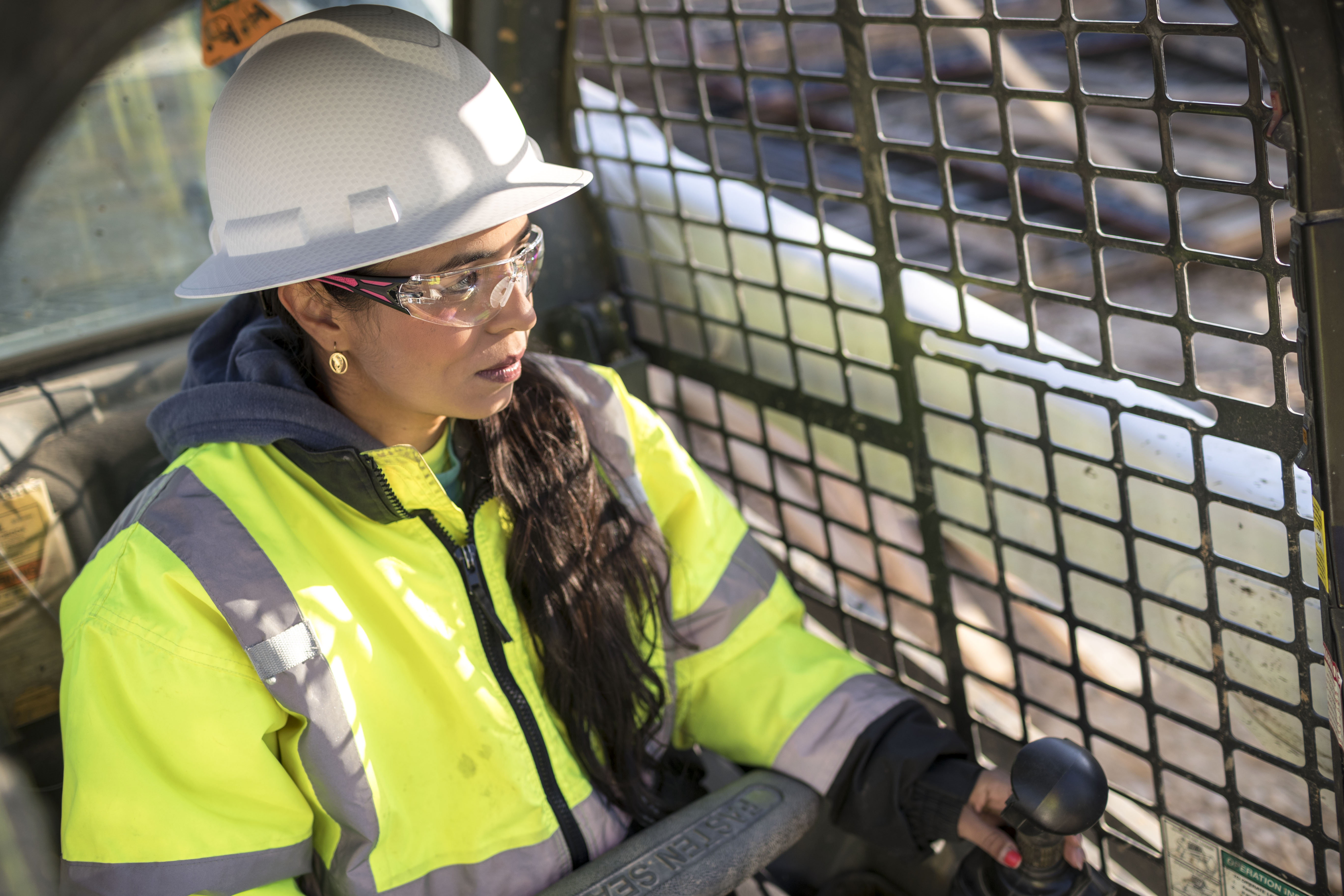
PPE For Women – One Size Does Not Fit All
The number of females on job sites has been steadily increasing with more and more women finding themselves in the construction industry every year. Personal Protective Equipment (PPE) that accommodates both men and women is crucial on the job site. PPE is the last line of defense against injury or death on the job site, and without proper equipment, women could be risking injury every time they go to work. In this article, we bring awareness to problems related to ill-fitting PPE and speak on sizing availability for hi-vis clothing, hard hats, and eyewear.
Problems Related To Ill-Fitting PPE
It’s not new information that women are built differently from men, making one-size-fits-all PPE inherently unable to fit a woman correctly. Regardless of height and weight, women generally have smaller bone structure than men, with shorter, narrower hands and feet and smaller facial shapes and features.
It is important that hard hats feature a suspension that is able to hold in place for those with wider or thinner face compositions. Wearing a hard hat too loose can result in a risk of vision being obscured or falling off. Moreover, if a woman is using protective eyewear that is sized for a man, the gaps left at her temples may allow for fragments flying from a machine to hit her eyes. Loose clothing items can also inhibit movement, snare on machinery, or affect one’s orientation, making it more likely to sustain injuries. Thus, more often than not, women forgo PPE altogether.
Women Specific PPE
Hi-Vis Clothing
Under previous standard editions, the amount of background material required to make many traditional garments, such as a Class 2 Vest, made it difficult for manufacturers to design garments that properly fit women.
The revised ANSI 107 – 2020 standard now allows for an exception to the minimum area requirements for background materials used in Type R Performance Class 2 and Class 3 garments with a ‘smallest size’ offering. However, no reduction in reflective material is allowed.
“Type R, Class 2 garments can have the smallest size in the size range compliant to the standard with a minimum of 540 in2 in background material to accommodate smaller workers. All larger sizes must have a minimum of 775 in2.
Type R, Class 3 garments can have the smallest size in the size range compliant to the standard with a minimum of 1000 in2 in background material to accommodate smaller workers. All larger sizes must have a minimum of 1240 in2.”
– International Safety Equipment Association
Manufacturers have recently started providing hi-vis vests in smaller sizes with a tailored cut to them that caters to a more feminine figure. Some vests have inner drawstrings to cinch in at the waist, allowing for a more customizable size without altering the cut during manufacturing.
Hard Hats
Typically, protective hard hats are available in a ‘one size fits all’ outer shell with an adjustable inner headband suspension. For a hard hat to fit correctly, it should have a 1 to 1 1/4 inch clearance between the outer shell and suspension system to allow for ventilation and shock absorption. While the suspension sizing is adjustable, the common sizing standard is 6 1/2 to 8 inches.
Often, women resort to adding a chin strap for better fit when hard hats are too large, which is not ideal for comfort.
In the ANSI Z89.1 – 2014 (R2019), it is noted that nothing in the standard will be construed prohibiting larger or smaller headband sizes. This statement has not been revised or changed in following updates, meaning manufacturers can produce smaller-sized hard hats that will still meet the ANSI standard.
Eyewear
Standard eyewear sizing is based off an average US man’s face size, making their safety features obsolete for women with smaller, narrower faces. Some women have found themselves adding a band to the back of their glasses to help them stay on and sit closer to their face, which in some cases can alter the intended features of the glasses.
The ANSI Z87.1 – 2020 update allows for products designed for smaller head sizes with the letter H visible for identification. It states that frames designed for small head sizes should cover an area of no less than 34 mm (1.34 in.) in width and 28 mm (1.10 in.) in height elliptical, whereas regular eyewear should cover an area of no less than 40 mm (1.57 in.) in width and 33 mm (1.30 in.) in height elliptical in front of each eye.
Manufacturers produce eyewear not just smaller in overall size, but also narrower to make them more suitable for feminine face shapes. Some styles are even available with adjustable temples for a more customizable fit.
Because the number of females in the construction industry is still considered only a small percentage of the entire workforce, safety products have not completely adapted to this growing demographic, but change is occurring. Through broadening the range of sizing, PPE only continues to become more comfortable, even fashionable, and, more importantly, it will become safer for female workers who need a wider selection of PPE that fits adequately.



